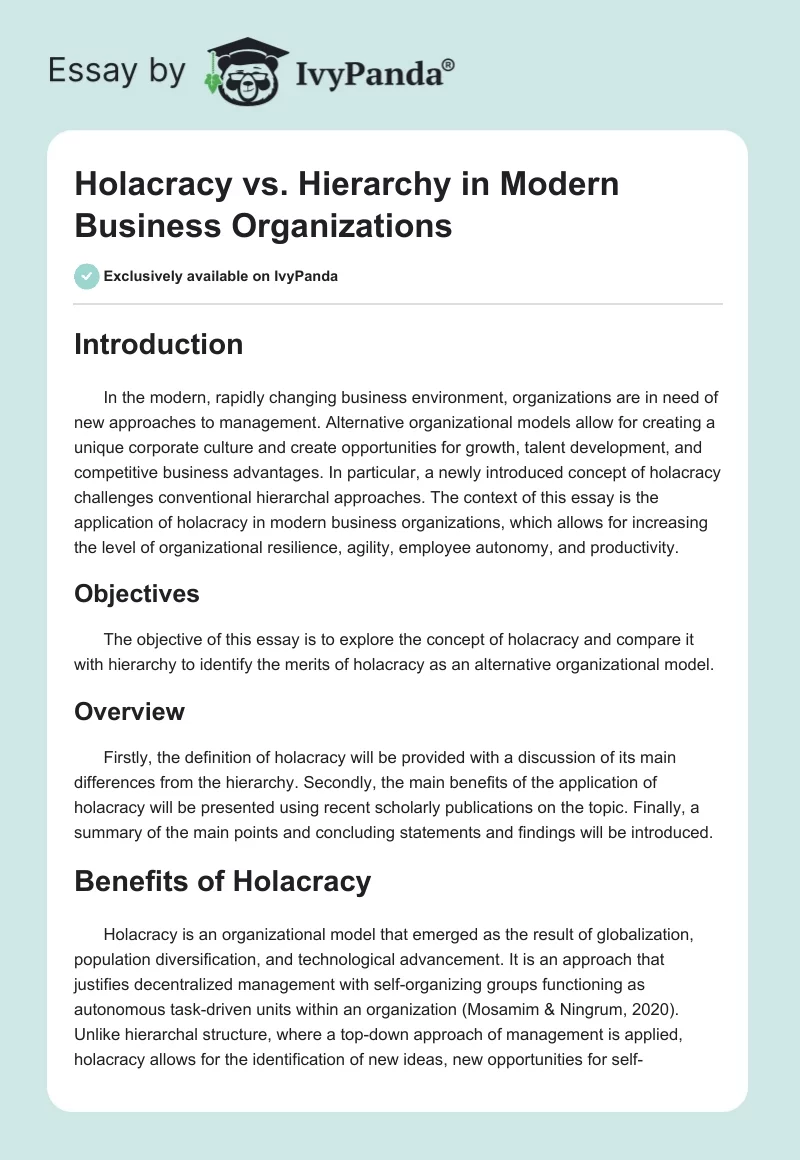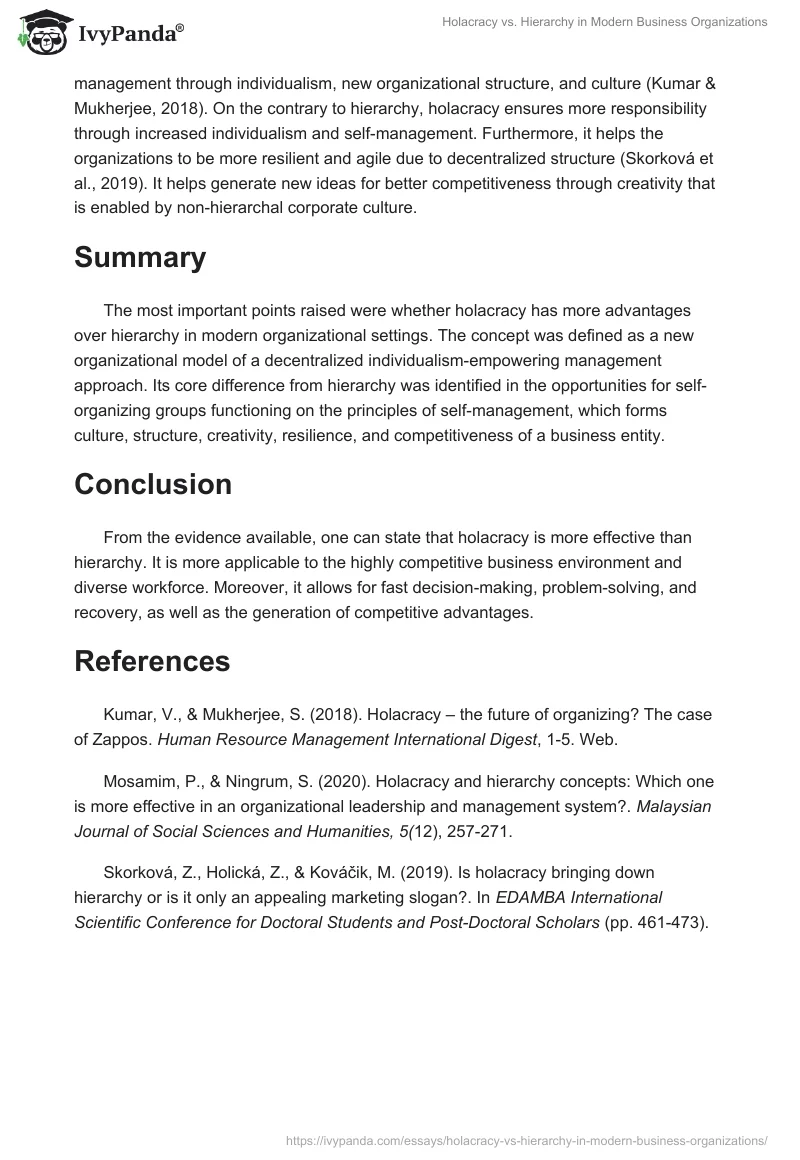Introduction
In the modern, rapidly changing business environment, organizations are in need of new approaches to management. Alternative organizational models allow for creating a unique corporate culture and create opportunities for growth, talent development, and competitive business advantages. In particular, a newly introduced concept of holacracy challenges conventional hierarchal approaches. The context of this essay is the application of holacracy in modern business organizations, which allows for increasing the level of organizational resilience, agility, employee autonomy, and productivity.
Objectives
The objective of this essay is to explore the concept of holacracy and compare it with hierarchy to identify the merits of holacracy as an alternative organizational model.
Overview
Firstly, the definition of holacracy will be provided with a discussion of its main differences from the hierarchy. Secondly, the main benefits of the application of holacracy will be presented using recent scholarly publications on the topic. Finally, a summary of the main points and concluding statements and findings will be introduced.
Benefits of Holacracy
Holacracy is an organizational model that emerged as the result of globalization, population diversification, and technological advancement. It is an approach that justifies decentralized management with self-organizing groups functioning as autonomous task-driven units within an organization (Mosamim & Ningrum, 2020). Unlike hierarchal structure, where a top-down approach of management is applied, holacracy allows for the identification of new ideas, new opportunities for self-management through individualism, new organizational structure, and culture (Kumar & Mukherjee, 2018). On the contrary to hierarchy, holacracy ensures more responsibility through increased individualism and self-management. Furthermore, it helps the organizations to be more resilient and agile due to decentralized structure (Skorková et al., 2019). It helps generate new ideas for better competitiveness through creativity that is enabled by non-hierarchal corporate culture.
Summary
The most important points raised were whether holacracy has more advantages over hierarchy in modern organizational settings. The concept was defined as a new organizational model of a decentralized individualism-empowering management approach. Its core difference from hierarchy was identified in the opportunities for self-organizing groups functioning on the principles of self-management, which forms culture, structure, creativity, resilience, and competitiveness of a business entity.
Conclusion
From the evidence available, one can state that holacracy is more effective than hierarchy. It is more applicable to the highly competitive business environment and diverse workforce. Moreover, it allows for fast decision-making, problem-solving, and recovery, as well as the generation of competitive advantages.
References
Kumar, V., & Mukherjee, S. (2018). Holacracy – the future of organizing? The case of Zappos. Human Resource Management International Digest, 1-5. Web.
Mosamim, P., & Ningrum, S. (2020). Holacracy and hierarchy concepts: Which one is more effective in an organizational leadership and management system?. Malaysian Journal of Social Sciences and Humanities, 5(12), 257-271.
Skorková, Z., Holická, Z., & Kováčik, M. (2019). Is holacracy bringing down hierarchy or is it only an appealing marketing slogan?. In EDAMBA International Scientific Conference for Doctoral Students and Post-Doctoral Scholars (pp. 461-473).


